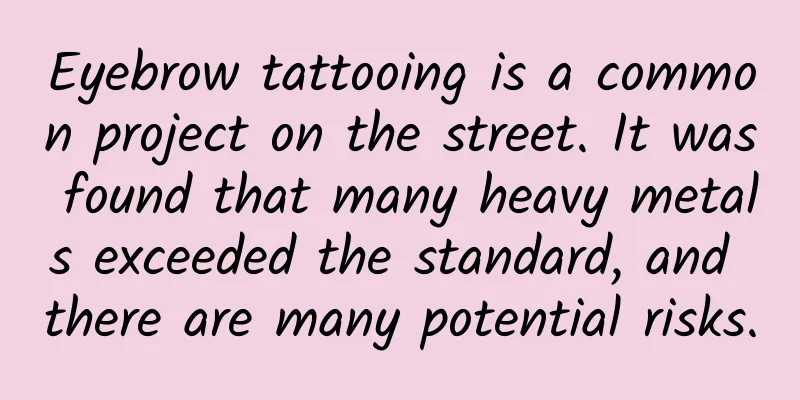Flat foot series popular science --- treatment of flat foot

|
The treatment of flat feet mainly focuses on relieving the patient's symptoms by adjusting the arch structure and improving the weight-bearing condition of the foot, thereby preventing further foot injuries. Most flat feet patients do not need treatment, or can be improved through conservative treatments such as improving standing and walking postures and wearing orthopedic braces. For patients who do not respond to conservative treatment, surgical treatment can significantly improve symptoms and walking function. Conservative treatment For most flatfoot patients, especially those with mild symptoms and short course of disease, conservative treatment is the first choice. It can effectively relieve pain, improve arch function, and has little trauma and low risk. Choosing the right shoes A pair of shoes that fit well and provide strong support is essential for patients with flat feet. When choosing, you should pay attention to arch support. Choose a style with a raised inner side of the sole that fits the arch of the foot, which provides solid support for the arch and effectively disperses walking pressure. The hardness of the sole should be moderate. Too hard can easily lead to walking fatigue, while too soft will lack support. A moderately elastic sole can be felt by lightly pressing with your fingers. When trying on, walk a few more steps to feel the comfort, ensure that there is no squeezing or friction on the heel and sole, and pay special attention to the wrapping support of the shoes for the arch and heel. For patients with flat feet, sports shoes and casual shoes are usually good choices. They are designed to pay more attention to foot comfort and support; high heels and thin-soled flat shoes should be avoided as much as possible. High heels will increase the burden on the foot, and thin-soled flat shoes lack arch support, which can easily cause the arch to collapse further. Use orthotic insoles Orthopedic insoles are a powerful tool for conservative treatment of flat feet. They are designed based on ergonomics and biomechanics and can accurately adapt to different degrees of balance. In terms of materials, silicone, foam, EVA (ethylene-vinyl acetate copolymer), etc. are commonly used. Silicone is the preferred choice for cushioning and shock absorption due to its softness and high fit; foam is lightweight and comfortable, with excellent breathability; and EVA material, with its tough and durable characteristics, provides strong support. Putting orthopedic insoles into shoes can fill the gaps in the soles of the feet, support the arches, redistribute the pressure on the soles of the feet, and reduce the force on the painful parts. For patients with mild flat feet, non-customized universal orthopedic insoles can usually provide some improvement, such as restoring the arches and reducing the pressure on the arches. However, for patients with moderate or severe flat feet, as well as those with special foot structures, customized professional insoles are recommended. Before customization, professional evaluations such as foot scans and pressure tests should be performed to ensure that the insoles fit the feet perfectly, so as to achieve the best correction effect. Many patients have reported that after using orthotic insoles for a period of time, the pain when walking is significantly reduced and the fatigue of the feet is also greatly alleviated. Functional Exercise Functional exercise is of great significance for strengthening the foot muscles and improving the elasticity of the arch. It is simple and easy to do at home. Plantar walking is a basic and effective exercise. Patients need to land firmly on the plantar part of the foot, move forward slowly, and carefully feel every force of the plantar muscles. Persist for 3 to 5 minutes each time, repeat 3 to 4 times a day, and you can significantly exercise the small muscle groups on the sole of the foot. Of course, there are other exercise methods that require the guidance of professional foot and ankle physicians. Physical therapy When flat feet cause pain and swelling, physical therapy can help. Massage is a common method. You can do it yourself or with the help of your family. Use your fingers to gently knead the sole and dorsum of the foot from the heel to the toes, focusing on massaging the attachment of the plantar fascia. Massage for 10-15 minutes each time, 1-2 times a day, can promote blood circulation and relieve muscle tension. You can also use tools such as massage balls and foam rollers to roll your feet on them to relax the plantar fascia. In terms of physical therapy, hot compresses can effectively dilate blood vessels and relieve pain. You can also use hot towels or hot water bottles to apply to the feet for 15 to 20 minutes each time. The temperature should be warm but not hot. As for physical therapy methods such as ultrasound and shock waves, they must be performed by doctors in professional medical institutions. Physical therapy must be performed under professional guidance to avoid aggravating the condition due to improper operation. Surgery When flatfoot develops to a more serious stage, conservative treatment is ineffective, severe pain, and joint deformities seriously affect the quality of life, surgical treatment becomes a necessary choice. The surgery aims to reconstruct the arch structure and restore the normal mechanical function of the foot. There are many types of surgery, including soft tissue surgery and bone surgery. For example, calcaneal medial displacement osteotomy changes the force line of the foot and increases arch support by cutting the calcaneus and shifting it inward; joint fusion orthosis fuses the diseased and unstable joints to eliminate abnormal movement and relieve pain, but the joint range of motion will be limited after surgery. Surgery is not the end of the problem. The postoperative rehabilitation process is also crucial. In the early stage of rehabilitation, you need to strictly rest in bed and raise the affected limb to promote blood circulation and reduce swelling. Carry out rehabilitation training step by step according to the doctor's instructions, starting with simple movements such as toe flexion and extension, ankle joint activities, and gradually transitioning to standing and walking exercises. The rehabilitation process is long, and patients need to remain patient and have regular follow-up visits. The doctor will adjust the rehabilitation plan based on the recovery situation. Now that you know how to treat flat feet, prevention is equally important. For people who are prone to obesity, weight control is key. Excess weight can put great pressure on the arch of the foot. By maintaining a balanced diet and engaging in moderate physical activity, you can keep your weight within an ideal range and significantly reduce the chances of flat feet. In daily life, avoid standing or walking for long periods of time. When you need to stand for a long time at work, take regular breaks and move your feet to promote blood circulation and reduce the burden on the arch of the foot. When choosing shoes, always keep in mind the principle of arch support. Whether it is daily commuting, exercising or attending formal occasions, you must give your feet proper care. Parents should pay special attention to the development of their children's feet. The arch of the foot is not yet fully formed during childhood. Children should avoid standing or walking for long periods of time. Instead, they should be encouraged to participate in more barefoot activities, such as walking and playing freely on soft beaches or grass. This can effectively stimulate the development of plantar nerves and muscles, and further promote the natural formation of the arch of the foot. Regular foot examinations are also necessary, especially during the peak growth and development period of adolescents, the stage of rapid weight changes, and the period of foot degeneration in the elderly. Early detection and early intervention can prevent problems before they occur. If you find yourself or your family members have suspected symptoms of flat feet, such as walking pain, abnormal gait, uneven shoe wear, etc., do not delay and go to a regular hospital orthopedic or foot and ankle surgery department in time. The doctor will tailor a personalized treatment plan according to the patient's specific condition. Patients must strictly follow the doctor's instructions, go for follow-up visits on time, and actively cooperate with various treatment measures, so that they can get rid of the troubles of flat feet faster and enjoy a healthy and vibrant life again. I hope that through this popular science, everyone will have a clear understanding of the treatment and prevention of flat feet. Let us protect the health of our feet and take every solid and powerful step together. (Pictures from the Internet, if there is any infringement, please contact us to delete). |
<<: Nodular goiter is not actually a goiter
>>: Why aren't many people using pravastatin, a drug with high safety? Are there any restrictions?
Recommend
Is it good or bad to have a ring?
Nowadays, many people choose to have an IUD insta...
What are the causes of slightly high echo in the uterine cavity?
What are the causes of slightly high echoes in th...
Why do girls feel itchy down there?
Many people will wonder why girls’ private parts ...
What to do if a pregnant woman has a hanging belly
In the later stages of pregnancy, pregnant women ...
If the fruit is moldy, can I still eat it after removing the moldy part?
Do you know what mycotoxins are? How does it ente...
What to do if your stomach is uncomfortable during menstruation
Menstruation is something that every adult woman ...
How to identify whether the fetal position is correct
There are many specific ways of fetal malposition...
What is the best treatment for uterine cysts?
Uterine cyst is a very common gynecological disea...
Why do girls wear makeup?
Women's nature is to love beauty. When girls ...
When is the best age for women to have children?
Due to age, illness, and lack of maintenance, the...
At what age did you start menstruating?
When women are menstruating, they should be caref...
Early symptoms of herpes zoster in women
I used to think that getting shingles was somethi...
What is the reason for sexual indifference after giving birth?
Everyone knows that a good sex life is very neces...









